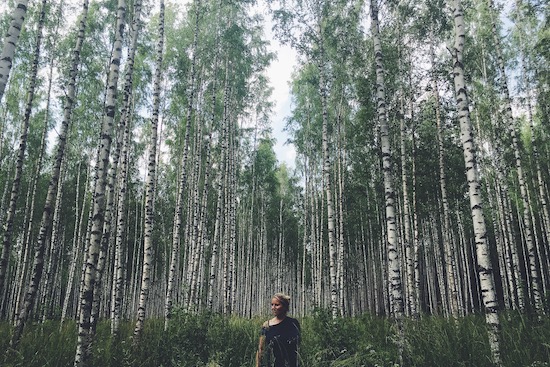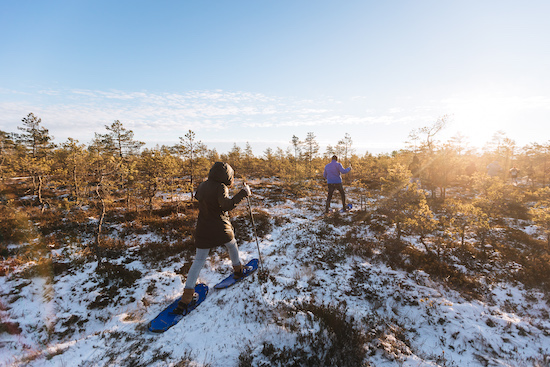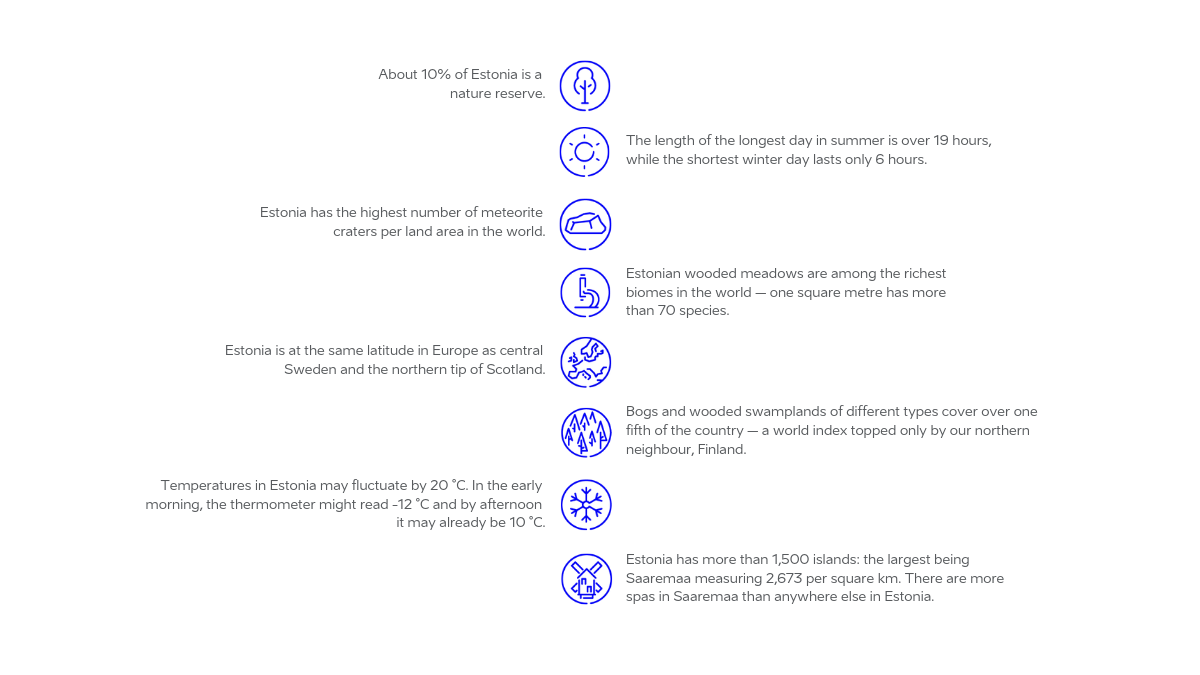 Seasons in Estonia vary widely. Average temperatures range from 20.9° C in summer, with July usually being the hottest month, to -8° C in winter, although occasionally the temperature may rise to 30° C and above in summer or fall below -23° C in winter. The longest day of the year is 21st June, with 19 hours of full daylight.
Seasons in Estonia vary widely. Average temperatures range from 20.9° C in summer, with July usually being the hottest month, to -8° C in winter, although occasionally the temperature may rise to 30° C and above in summer or fall below -23° C in winter. The longest day of the year is 21st June, with 19 hours of full daylight.
The Estonian natural environment is influenced by the low population density (around 30 inhabitants per square km), its proximity to the Baltic Sea and its position between the Eastern and Central European bio-geographical area. That means there is a borderline of occurrence for many species and types of landscapes here. Bogs, meadows, forests, and little lakes offer the opportunity to experience silence and pristine nature. Furthermore, Estonia has more than 1,500 charming islands: the largest are Saaremaa, Hiiumaa and Muhu.
 Spending time outdoors is a pleasure in Estonia. Estonian nature is picturesque and vibrant. Hiking trips and camping are very popular in summer, and skiing and other winter sports are enjoyed by many in winter. The State Forests offer beautiful hiking trails and possibilities for accommodation. There are also many other places in Estonia where one can spend enjoyable time outdoors. Probably the best places for skiing are in southern Estonia where you will possibilities for mountain skiing, for example at Kuutse Hill (in Estonian Kuutsemäe), but don’t expect the Alps! Beautiful cross-country skiing trails can be found in Otepää, Kääriku, Vooremäe, Haanja, Mõedaku or Kõrvemaa, but also within city limits — in Pirita in Tallinn and in Tähtvere park in Tartu. Beautiful places worth visiting include Taevaskoja, Soomaa, Saaremaa, Hiiumaa, the Northern coast, Lahemaa, the Piusa caves, the Endla Nature Reserve and Suur Munamägi and many others.
Spending time outdoors is a pleasure in Estonia. Estonian nature is picturesque and vibrant. Hiking trips and camping are very popular in summer, and skiing and other winter sports are enjoyed by many in winter. The State Forests offer beautiful hiking trails and possibilities for accommodation. There are also many other places in Estonia where one can spend enjoyable time outdoors. Probably the best places for skiing are in southern Estonia where you will possibilities for mountain skiing, for example at Kuutse Hill (in Estonian Kuutsemäe), but don’t expect the Alps! Beautiful cross-country skiing trails can be found in Otepää, Kääriku, Vooremäe, Haanja, Mõedaku or Kõrvemaa, but also within city limits — in Pirita in Tallinn and in Tähtvere park in Tartu. Beautiful places worth visiting include Taevaskoja, Soomaa, Saaremaa, Hiiumaa, the Northern coast, Lahemaa, the Piusa caves, the Endla Nature Reserve and Suur Munamägi and many others.
Interesting facts about Estonia

